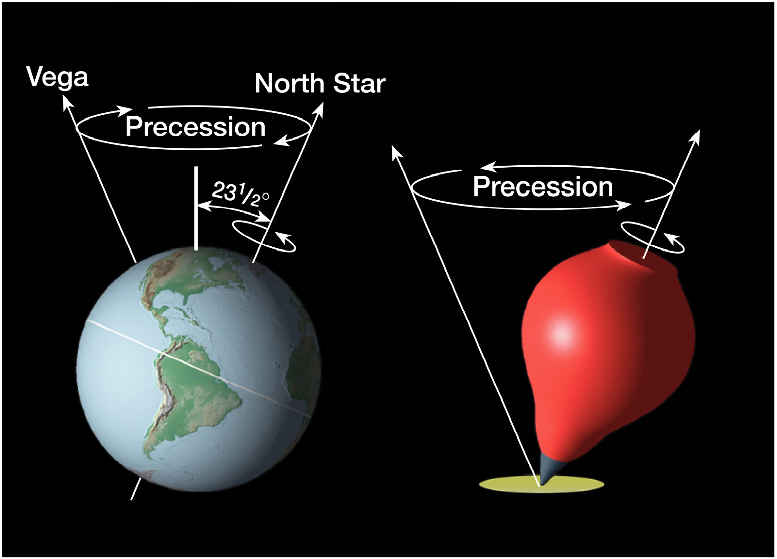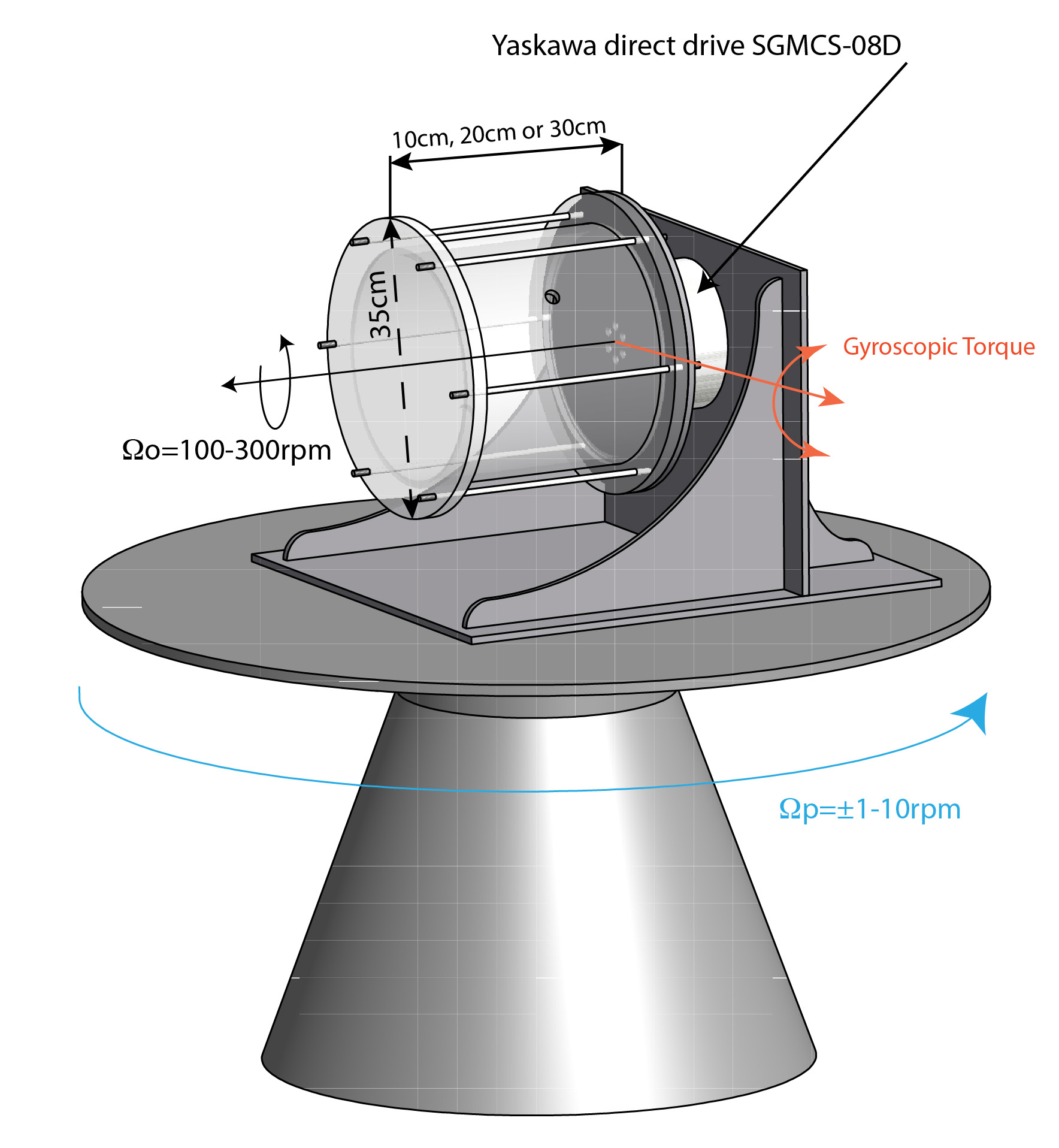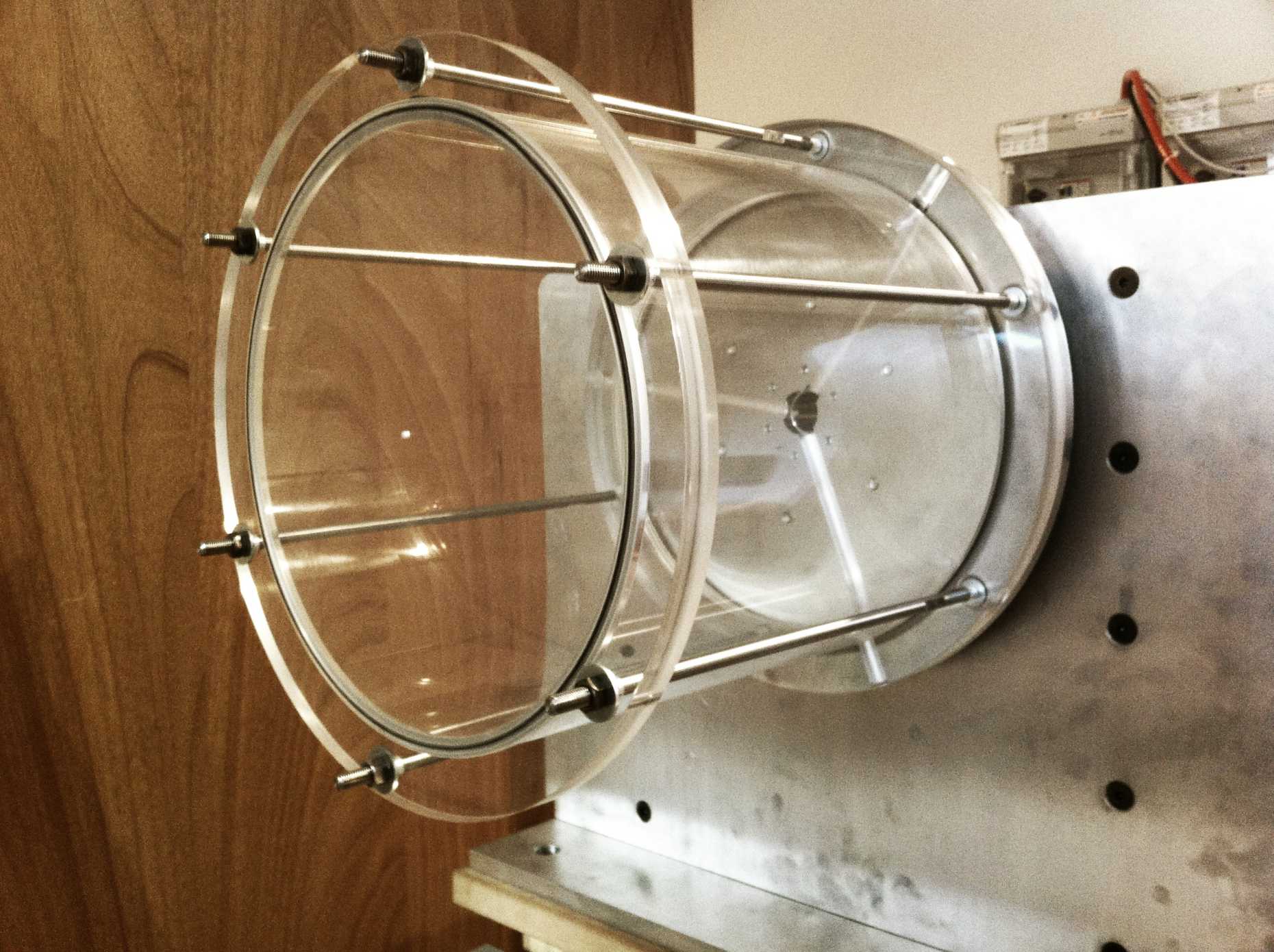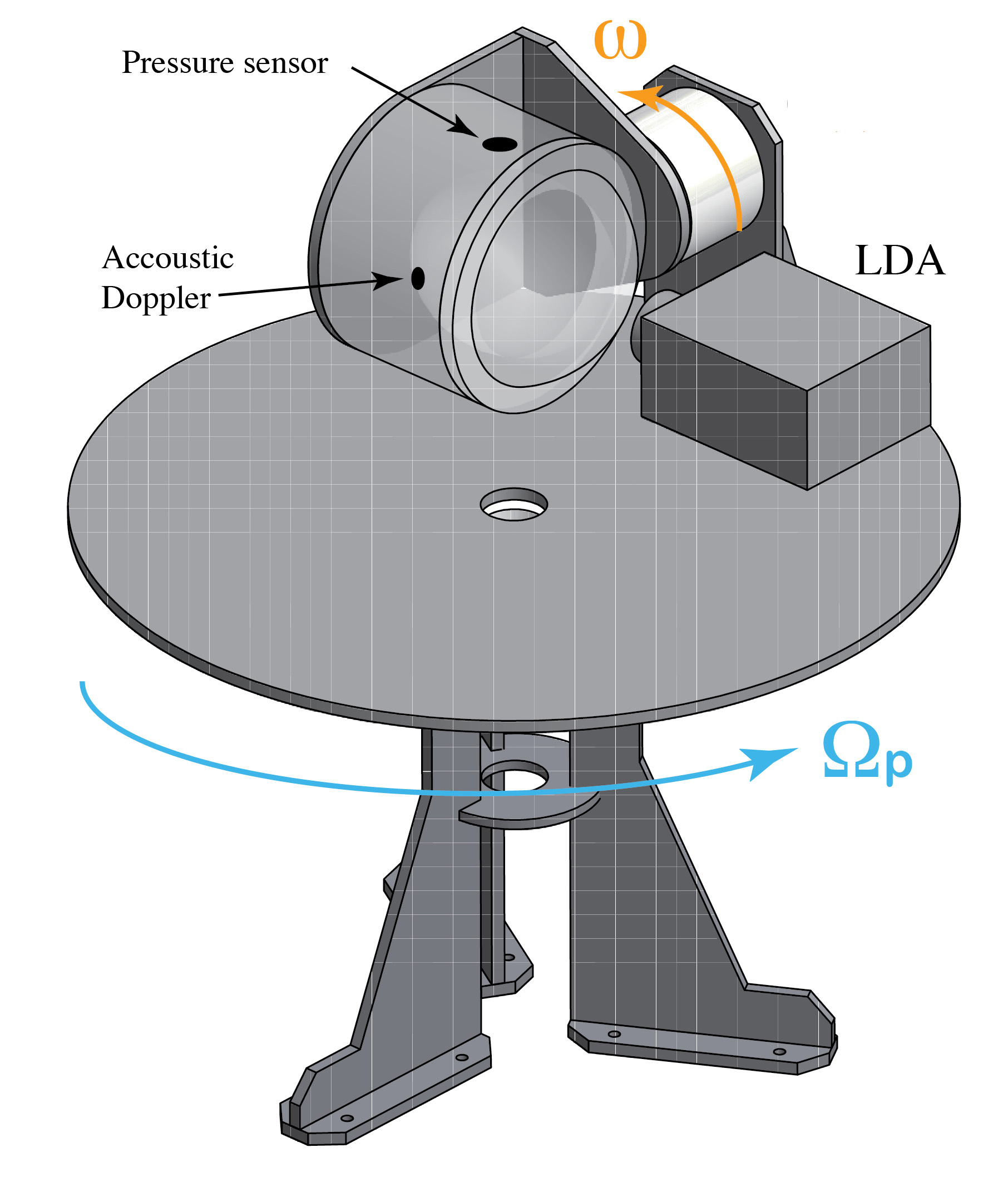Experimental precession
Introduction and motivations
The precession motion of a planet arises from the gravitational torque due the obliquity. As a result, the spin axis of the planet drift in time in the same manner as a gyroscope (Figure 1). Although, this motion is in general very slow (18.6 years for the Earth's moon, 27 000 years for the Earth), the pressure and viscous couplings at the core mantle boundary can drive complex flows that may play a significant role in magnetic field induction, angular momentum transfer and energy dissipation. Our laboratory started two experimental projects, which aim to investigate the dynamics resulting from precessional forcing in planetary cores and subsurface oceans. The aims are to investigate the so called precessional and elliptical instability and question the nature of the turbulence in this rapidly rotating systems.
Drawings of the full precession experiment in a cylindrical annulus
People involved: Jerome Noir




